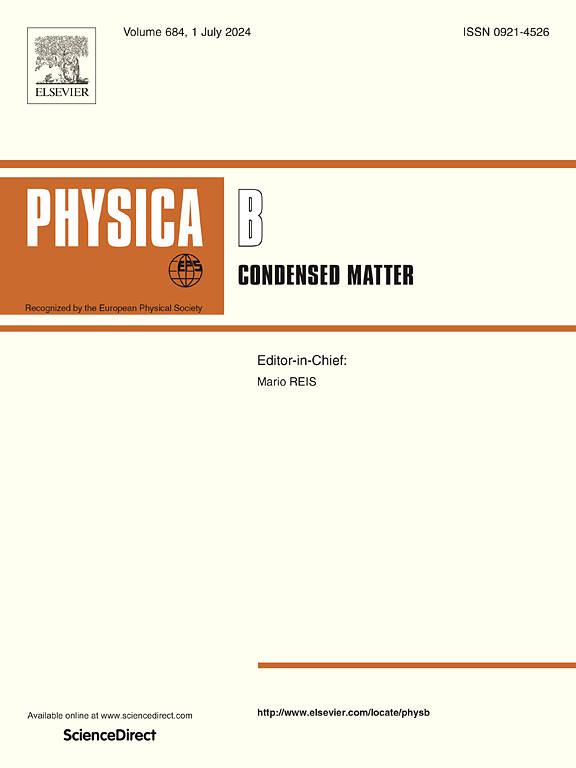溶剂热合成用于光催化降解有机染料的pvp辅助cu结构
IF 2.8
3区 物理与天体物理
Q2 PHYSICS, CONDENSED MATTER
引用次数: 0
摘要
在合成过程中使用聚合物可以促进半导体结构的生长和多样性,从而提高其减少环境污染的有效性。通过改变PVP添加剂的用量,采用溶剂热法合成了球形CuS半导体结构。采用XRD、FE-SEM、TEM、EDS、XPS、Raman、FT-IR和uv -可见光谱技术研究PVP对cu结构合成的影响。XRD分析表明,合成结构为多晶六方结构。FE-SEM显示,这些结构具有球形,含有片状纳米颗粒。能谱分析表明,pvp辅助Cu结构的铜含量略高,Cu:S (at.%)为60:40。XPS分析表明,Cu元素在合成材料中以Cu(II)和Cu(I)两种状态存在。在330 ~ 750 nm波长范围内观察到cu结构的宽吸收光谱,吸收边在~ 330 nm。此外,在自然光照条件下,考察了pvp辅助cu对亚甲基蓝和结晶紫有机染料的光催化降解活性。本文章由计算机程序翻译,如有差异,请以英文原文为准。
Solvothermal synthesis of PVP-assisted CuS structures for sunlight-driven photocatalytic degradation of organic dyes
Utilizing polymers in the synthesis process enhances the growth and variety of the semiconductor structures which increases their effectiveness in reducing environmental pollution. The ball-shaped CuS semiconductor structures were synthesized via solvothermal technique by varying the amount of PVP additive. The impact of PVP on the synthesis of CuS structures was investigated using XRD, FE-SEM, TEM, EDS, XPS, Raman, FT-IR, and UV–visible spectroscopic techniques. XRD analysis identified a polycrystalline hexagonal structure in the synthesized structures. FE-SEM revealed that these structures have spherical ball shapes containing flaky nanoparticles. EDS study reveals that PVP-assisted CuS structures are slightly copper-rich and have Cu:S (at.%) of 60:40. XPS analysis showed that in the synthesized material Cu element exists in two states i.e., Cu (II) and Cu(I). A broad absorption spectrum of CuS structures was observed within the 330–750 nm wavelength range with an absorption edge at ∼330 nm. Moreover, the photocatalytic degradation activity of PVP-assisted CuS against methylene blue and crystal violet organic dyes was investigated under natural sunlight conditions without any additive.
求助全文
通过发布文献求助,成功后即可免费获取论文全文。
去求助
来源期刊

Physica B-condensed Matter
物理-物理:凝聚态物理
CiteScore
4.90
自引率
7.10%
发文量
703
审稿时长
44 days
期刊介绍:
Physica B: Condensed Matter comprises all condensed matter and material physics that involve theoretical, computational and experimental work.
Papers should contain further developments and a proper discussion on the physics of experimental or theoretical results in one of the following areas:
-Magnetism
-Materials physics
-Nanostructures and nanomaterials
-Optics and optical materials
-Quantum materials
-Semiconductors
-Strongly correlated systems
-Superconductivity
-Surfaces and interfaces
 求助内容:
求助内容: 应助结果提醒方式:
应助结果提醒方式:


